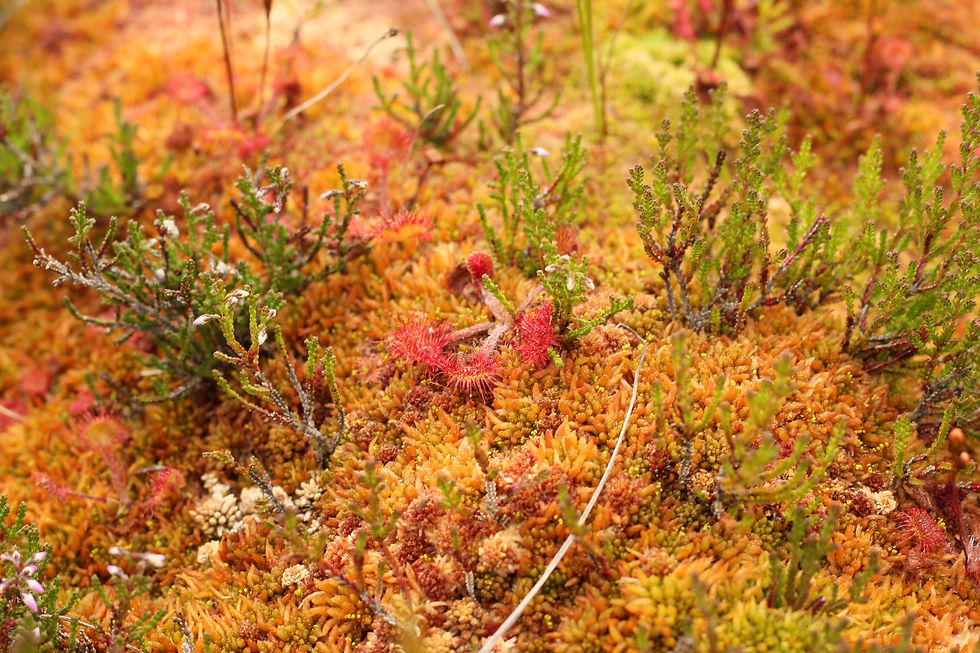top of page

Welcome to our website and gallery pages.
What are bog woods?
Bog wood is a collective term for trees which over time fell and were covered over with peat as the Irish bogs formed.
It is comprised of 3 main species which are oak ( quercus ), pine ( pinus ) , and yew ( taxus ).
Bog woods can range between 100's to 1000's of years in age, the oldest dated bog wood in Ireland is bog oak dated to 7000BC when the Irish peat lands began their formation.
The formation of bog wood.
After the last ice age 13000-15000 years ago grasses, shrubs and trees recolonized Ireland, between 7,000 BC and 4,200 BC, Ireland‘s climate warmed and the bogs stayed relatively small; instead, great forests covered most of the country.
Around 4200 BC, the climate deteriorated and became much wetter and cooler, this caused a decline in the native forests. At the same time, humans began clearing the forests for farming. The decline in forest cover resulted in greatly increased run-off of rainwater from the land, and in poor drainage, promoting the spread of bogs. As the bogs spread, trees at the edges of the bogs were drowned and as the bogs continued to grow these trees were enveloped in peat and buried.
Why did these woods not decay?
Covered at first by water then enveloped in peat and slowly buried, these woods were preserved by a combination of acidity in the peat and the absence of oxygen in their surrounding environment.
All about bog oak.
Irish bog oak has for centuries has been prized for it's beauty and became highly popular in the Victorian era when the colour black became highly fashionable in clothes and jewelry, in particular bog oak was used to create mourning broaches.
Bog oak can range in colour from dark brown to jet black with grey silver growth rings, the coloration of bog oak is a good indication of age with the older oak taking on a jet black coloration and the younger oak taking on various shades of dark brown .
Naturally occurring chemical processes are responsible for the colour change within bog oak, hydraulic pressure caused by the overlying peat forced acidic bog water into the fibers of the oak.
Salts and minerals contained in this water slowly reacted with tannin's contained in the oak causing the oak to darken through the various shades of brown until eventually it turned jet black.
Ireland has two species of native oak, Sessile oak-Quercus petraea is the most common of the two can be considered the ‘traditional Irish oak’. Sessile oaks grow in poor acidic soils and are commonly located in hilly regions.
Pendunculate oak-Quercus robur is less common favouring heavy lowland soils and can withstand periods of flooding and wet soil in winter.
The majority of Irish bog oak is from Pendunculate oak.
Working with bog oak.
Beneath the beauty of bog oak lies a wood that is incredibly hard and unforgiving, cutting, turning and planing tools quickly dull and need to be sharpened frequently drastically reducing the life span of your tools.
As with many woods the dust from working with bog oak is an irritant and a good quality respirator and dust extraction system is needed, bog oak may splinter or rip apart when sawing or turning so a quality face shield is also necessary.
Bog oak when extracted from the ground is considered "green" and full of moisture, it must be air dried for years depending on thickness before it can be worked with, using "green" or wet bog oak will result in checking and warping.
Harvesting bog oak.
A solid piece of bog oak is a rare find, in Ireland it's mostly found in the early Spring and Summer when the harvesting of peat turf for winter fuel begins.
Occasionally a piece emerges and is carefully excavated.
In fields reclaimed from bog lands, plowing or the creation of drainage ditches in certain areas may yield a workable piece of bog oak.

IMG_4820

Turf cutting.
Cutting turf for the Winter months

Footings.
Close up of the footings.

Bog oak trunk with some root.
Up from the bog and being prepared for drying.

Raw bog oak
Some more trunks up from the bog.

Raw bog oak 2
Measuring up for cutting.

bog pine

bog yew

bog oak



bottom of page